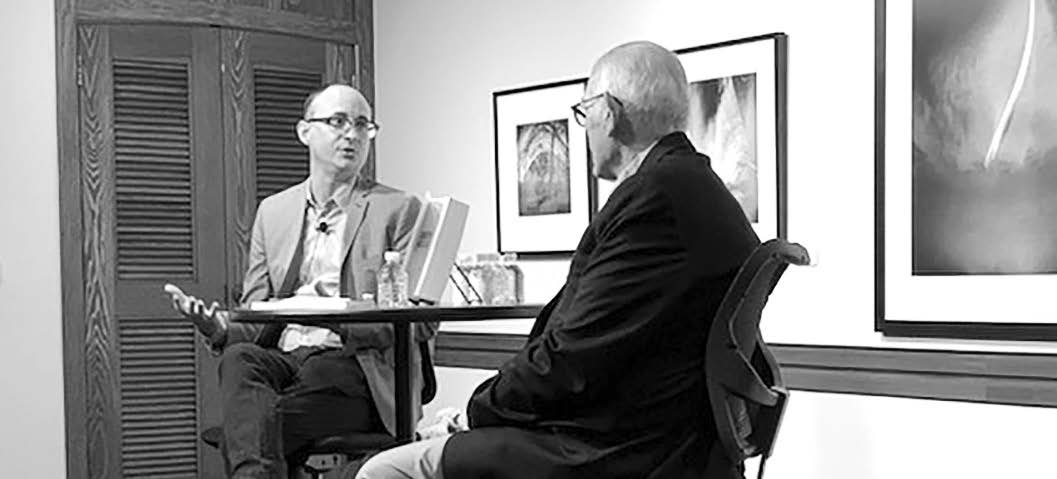JTMH Volume 21 | Letter From the Director

Music is in the air again as we once more gather to enjoy performances together in physical spaces, reminding us of the significance of music in our communities and in our lives. In 2022, we urge our readers and patrons to support artists and venues where and when they can to sustain the vibrant music scenes and traditions all across Texas.
Since the last issue of the journal, we have continued to commemorate Texas music primarily through virtual events. In conjunction with the Texas State Galleries and the Hostile Terrain 94 exhibition, we hosted live performances and documentary efforts by Lesly Reynaga of Austin, Nina Diaz of San Antonio, and the national DJ collective Chulita Vinyl Club. We explored Austin’s jazz history through virtual conversations with writers Michael Corcoran and Kahron Spearman and artists Pamela Hart and James Polk, and celebrated the publication of Seeing Stevie Ray with photographer Tracy Anne Hart and guitarist Eric Tessmer. We also took the Center’s mission off campus, presenting panels of our colleagues’ and students’ research at the Texas State Historical Association and the East Texas Historical Association. Many of these occasions exist as recordings that you can revisit on the Center’s YouTube channel.
We were also proud this past year to offer the inaugural Kent Finlay Scholarship to Texas State student Ariana Tamez. The scholarship fund, generously spearheaded and championed by members of the Randy Rogers Band, memorializes the late songwriter, Cheatham Street Warehouse proprietor, Texas State history instructor, and San Marcos icon Kent Finlay for all that he contributed to Texas music, passing on that passion by supporting new generations of students.
This edition of the journal turns our attention to Houston and the Coastal Bend, tracing a particular arc in the history of what author Mary Manning terms the Gulf Coast Sound. Joe Specht writes on Lightnin’ Hopkins and his lyrical engagement with American wars in the second half of the twentieth century, a reminder of the ways that music tracks current events and serves as an interesting primary source for historians. Mary Manning takes us a few decades into the future among Lightnin’s aesthetic descendants with a history of Nick Gaitan and Los Skarnales, looking to their mixture of country, rock, soul, Tejano, swamp pop, and more as a reflection of the creative gumbo in Texas’s largest city. Finally, Marguerite Gutierrez Hirsch shares an untold story from her own family, of three generations of the Perez Orchestra in the Coastal Bend, demonstrating how Texas history proceeds through intimate household narratives, and how deeply interwoven local artists are in their communities throughout the state, whether or not they were extensively recorded.
The Center looks forward to both in-person and virtual events in the remainder of 2021 and into 2022 on the subjects of 1980s rock, Houston hip-hop, El Paso punk, Austin blues history, and more, including plans for a campus visit from a recent inductee into the Rock and Roll Hall of Fame. Our John and Robin Dickson Series at A&M Press is also going strong. In addition to Tracy Anne Hart’s book on Stevie Ray Vaughan, Brian Atkinson’s Looks Like Rain: The Songwriting Legacy of Mickey Newbury and a new edition of Diana Finlay Hendricks’s Delbert McClinton: One of the Fortunate Few arrived in 2021. As this goes to print, we will also be nearing publication on Brian Atkinson’s True Love Cast Out All Evil: The Songwriting Legacy of Roky Erickson, Kathleen Hudson’s Corazón Abierto: Mexican American Voices in Texas Music, and Courtney Lennon’s Live Forever: The Songwriting Legacy of Billy Joe Shaver.
To learn more about the Center, please contact us or visit our website. There’s no charge to receive the journal by mail. Simply contact Jason Mellard or Kristi Madden with your address, and we’ll be happy to put you on our list. You can connect via our Facebook, Twitter, Instagram, and YouTube accounts as well.
Of course, we couldn’t have done any of this without the hard work, advice, and financial contributions from all of our friends and supporters. This journal is a group effort of Alan Schaefer, César Limón Delgado, Kristi Madden, and myself. We offer our sincerest thanks to Gary Hartman, Callie Lewis, Adam Clark, Tammy Gonzales, John McKiernan-Gonzalez, Jeff Helgeson, Mary Brennan, Gregg Andrews, Margo Handwerker, Thom Lemmons, Madelyn Patlan, Roberta Ruiz, Twister Marquiss, Hector Saldaña, and the Center’s Advisory Board. And thanks to all of you who remain invested in the study, preservation, and celebration of Texas music history.
Dr. Jason Mellard
Director Center for Texas Music History
Department of History Texas State University
601 University Drive
San Marcos, TX 78666
(512) 245-1101
jasonmellard@txstate.edu
Image Information:
Director Jason Mellard and Historian Bill Malone at the Wittliff Collections, February 2020. Photo by: Twister Marquiss.
